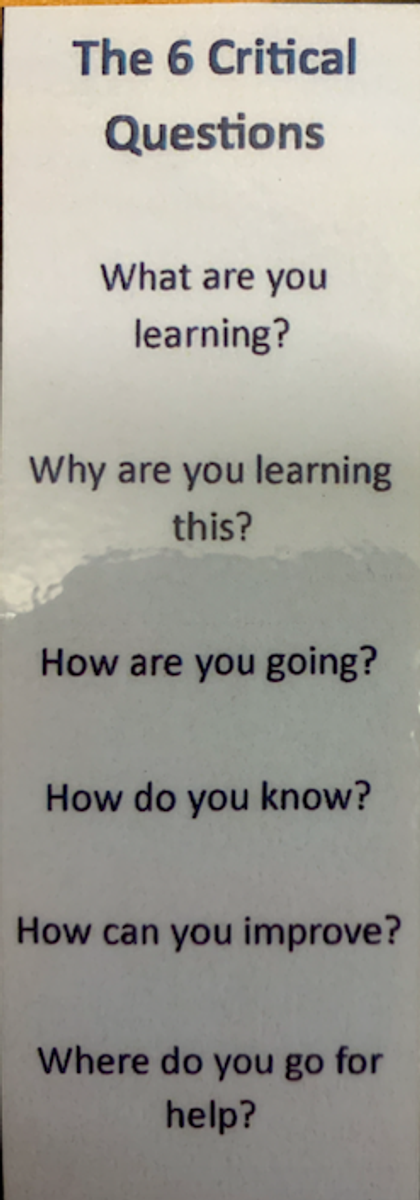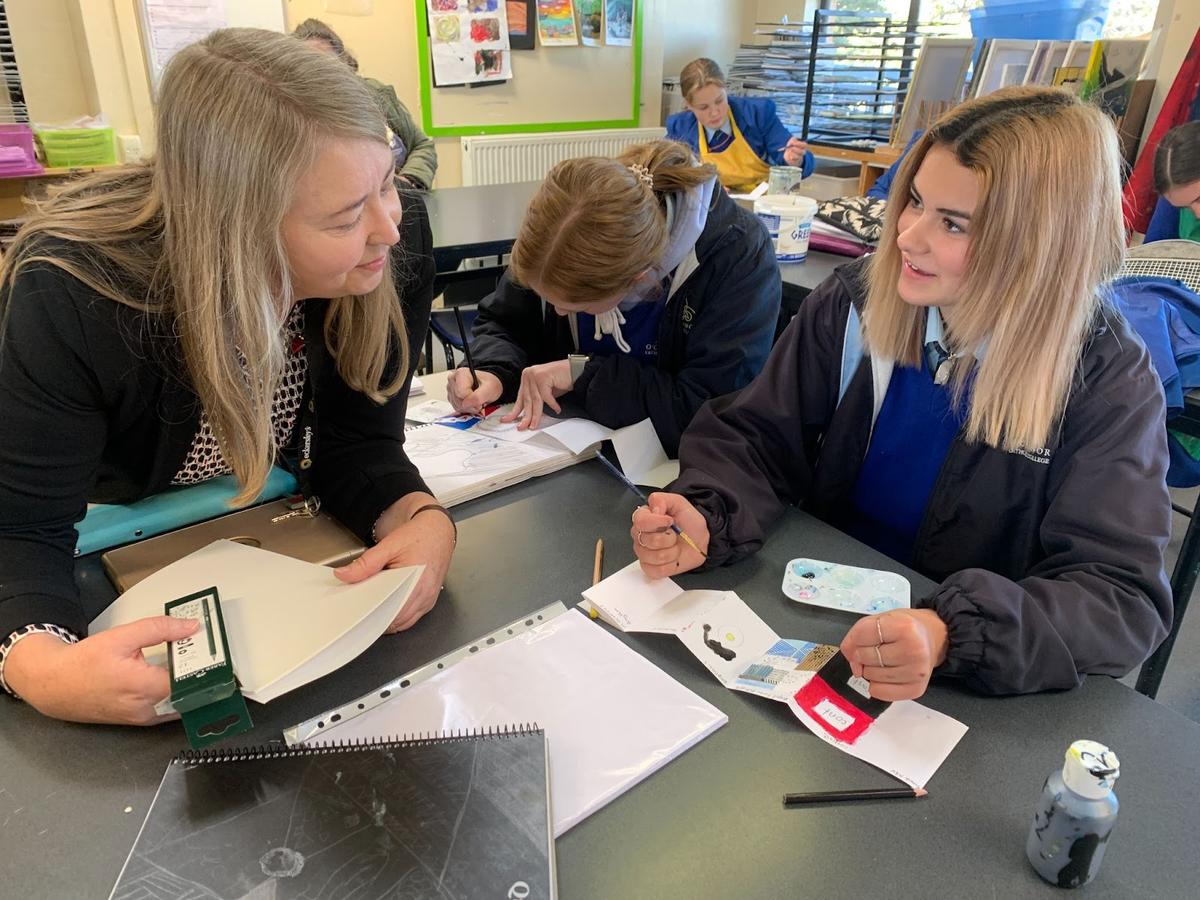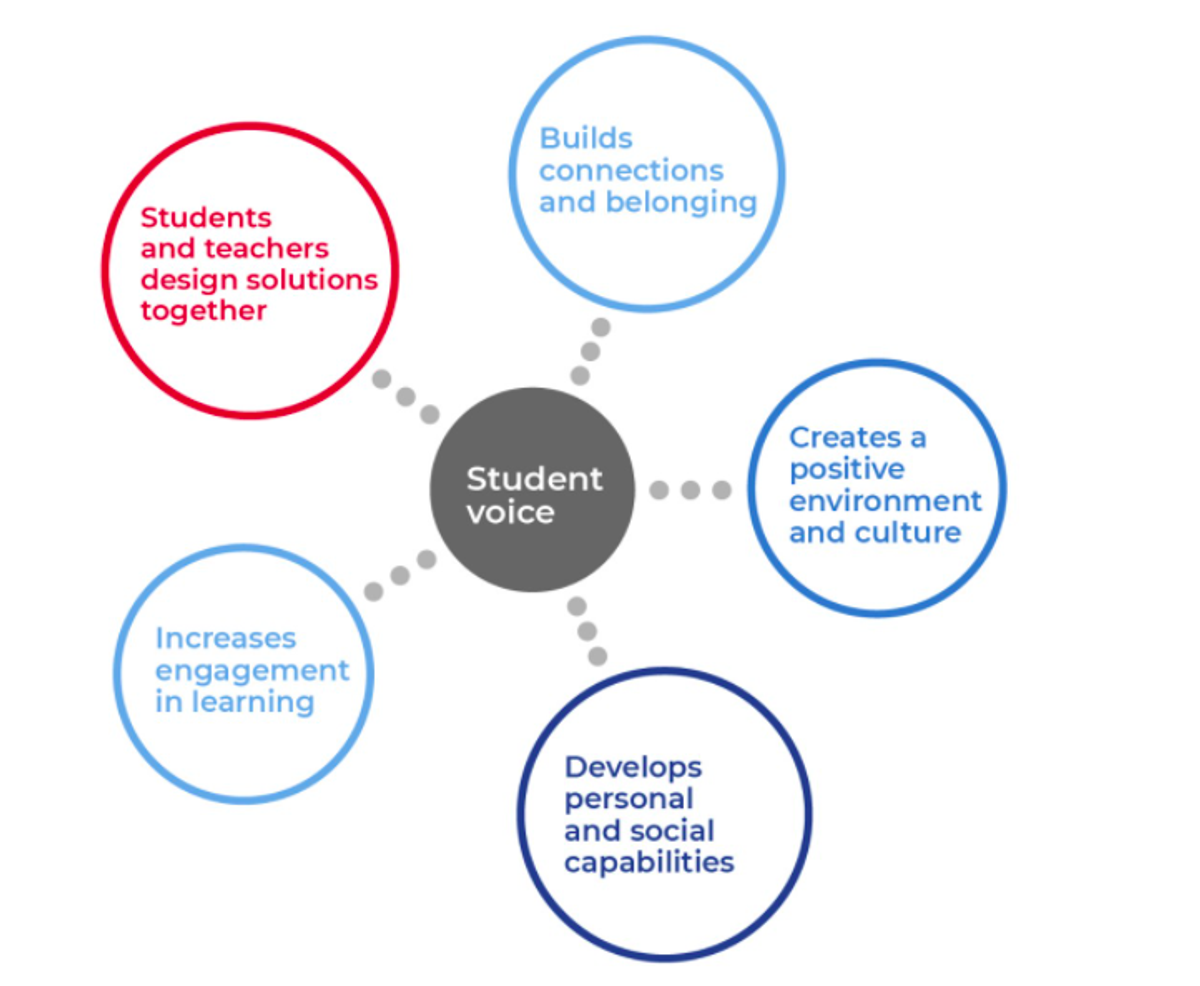Assistant Principal / Leader of Pedagogy
Mr Stephen Chapman

Assistant Principal / Leader of Pedagogy
Mr Stephen Chapman
Student Voice in Learning
Student voice is a big part of our school. We listen to students in so many different ways. These discussions have, at times, guided the decisions of the school. The Student Representative Council (SRC) certainly has a role in the future direction of the school. There is much more to student voice than this, though. “In schools today, student voice is much more than token consultation with students over things like school uniform, or the theme of the school fete.” (P. 1, Vukovic, 2020). The true power of student voice is when it is used in the learning process. That is the focus that I am applying to this article.
Before I start explaining the details, it’s worth saying that when I say student voice, that doesn’t only mean students talking. It includes written surveys and non-verbal indicators like hands up. It means any time students are contributing.
I will discuss the role of student voice in formative assessment, self and peer assessment, choice in learning tasks, Student-Led Conferences, reflection surveys, the five (or six) questions and student preferences for Year 11 subjects.
To start with, I’ll talk about something I’ve mentioned numerous times in my articles: Formative Assessment. This is also known as Assessment For Learning (AFL). This is when that teacher takes notice of what the students are telling them and adjusts their teaching accordingly. This happens in so many ways every day at O’Connor. Students might do a pre-test for a unit which tells the teacher what they already know. They check-in with exit tickets or “thumbs” to see how they are going with the learning (See the photo below). Is it time to go on? It can be as simple as helping students when they need it. The students ask for the help that they need. As a result, the teacher is giving instruction that helps them individually.


Year 9 indicating who has got it and who needs more help by indicating with their thumbs.
Secondly, student voice is a major part of self and peer assessment. It’s one of the sections of the worthwhile lesson that we use here at O'Connor to ensure high-quality lessons. Student voice is particularly evident when peer assessment is used. Students need to talk to each other about the quality of their respective work. This results in feedback to move their learning forward coming directly from their peers.
Student voice is clearly evident when the students are able to choose direction in their learning tasks. This choice enables them to study an area or topic that they are interested in. The result is often motivation and engagement in the learning task. There are many examples of this happening in classes at O’Connor. The Year 7 Praxis Projects, the Year 10 History Projects and the Year 10 Desmos Art in Maths Project are three that come to mind.
Student-Led Conferences are a very clear example of student voice. These conferences take place next week (week 3) for Year 7 and 8 and the week after (week 4) for Years 9 and 10. Mrs Bell has written a detailed explanation of these conferences in this newsletter, so I'll keep it brief here. The students themselves run a meeting with their parents to tell them all about their learning so far this semester. This is a formal opportunity for them to reflect on their learning. What works for them and what doesn’t? What do they need to improve in?
Reflection surveys are an easy way for students to use their voice. In all Year 7 to 10 classes, the students were asked to fill in a Google Form survey before they received their Semester 1 report. This was towards the end of last term. Each student was asked about their learning in each class, including them giving themselves a grade A to E. They also were asked to explain why they gave themselves that grade. These reflective surveys provide data to guide discussions between teachers and students.
Teachers regularly talk to students, both in their own classes and when visiting others, about their learning. It’s the student who does most of the talking in these discussions. The teacher normally asks the five learning questions: 1. What are you learning? 2. How are you going? 3. How do you know? 4. How can you improve? 5. Where do you go for help? At O’Connor, we usually ask a 6th question: Why are you learning this?
Here they are on a laminated bookmark that I keep on my desk.




Hannah explaining her learning behind the Art Principles Booklet in Year 8 VA yesterday. An example of student voice in action.
A very different and very important example of the use of student voice at O’Connor is the way we decide what subjects to run for Year 11 and 12 each year. We could make our minds up which subjects we want to run as teachers and then put them on lines as we like. But we don’t do that. We survey the students in Year 10 to find out what subjects they want to do, then use the data to decide what subjects to run. Then, we put the subjects on lines to ensure the minimum number of clashes. This process would be very different if we didn’t listen to student voice!
Lastly, the NSW Department of Education uses this image to promote the power of student voice in schools.


(NSW Department of Education, 2020)
Our school is a dynamic learning environment! One of the reasons I can say this so confidently is due to the way us, as teachers, listen to our students. Student voice is vital to us. In closing, I love hearing my student’s voices. Every day they teach me something new.
Mr Stephen Chapman
Assistant Principal - Leader of Pedagogy
Never stop learning; for when we stop learning, we stop growing - Jack Lewman


References
Student voice, participation and leadership. NSW Department of education. Sept 25, 2020.
Retrieved from https://education.nsw.gov.au/student-wellbeing/student-voices/student-voice-and-leadership
How ‘student voice' has evolved over time. Vukovic, R. Teacher Magazine. Sep 28,2020. Retrieved from https://www.teachermagazine.com/au_en/articles/how-student-voice-has-evolved-over-time